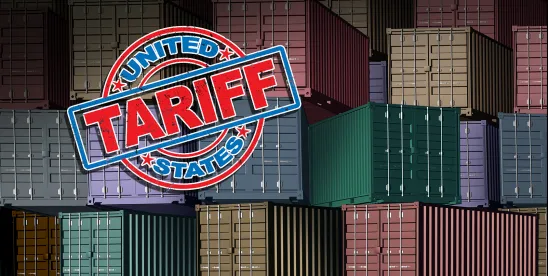The recent announcement of a pause in the rollout of reciprocal tariffs has created some confusion — and some hope — for multinationals and importers around the world. While the announcement hopefully presages a bit of calm and the potential lowering of tariffs in what has become a rapidly escalating trade war, the reality is far more complex. This article outlines what every importer needs to know about the scope and implications of the pause and why, for many importers and companies that depend on imports, the risk of a tariff-induced disruption is likely to remain an importing certainty for the reasonably foreseeable future.
What’s Paused — And What’s Not
As a starting point, here are the groupings of tariff announcements to understand the context of tariffs:
- Chapter 1-97 Pre-existing Tariffs: These are the tariffs that have existed for decades, generally in the range of 0%–7%. These tariffs continue to apply, as all tariffs “stack” on top of the normal tariffs.
- Section 301 Tariffs: These tariffs were imposed just on Chinese-origin goods in the first Trump administration. About half of trade with China is exempt from these tariffs (the so-called “List 4B”); the other half of imports from China pay a tariff of between 7.5% and 25%. These tariffs lasted through the Biden administration and stack on top of the Chapter 1-97 tariffs for China alone.
- Section 232 Sectoral Tariffs: The third set of tariffs are the sectoral tariffs imposed under Section 232 on specific products. These sectoral tariffs fall into three buckets:
- First, there are 25% tariffs imposed on steel and aluminum, payable on products from anywhere in the world. The tariffs extend to certain identified steel and aluminum derivative products (i.e., products in identified Harmonized Tariff Schedule (HTS) subheadings that contain a lot of steel or aluminum). The only carveout here is for products that use steel and aluminum that are “melted and poured” or “smelted and cast” within the United States. For derivative products, only the value of the steel or aluminum is subject to the additional 25% tariff.
- Second, there is a 25% tariff imposed on automobiles and most automotive parts. For the automotive tariffs, there currently is a pause in their implementation for parts and components that are USMCA-compliant. By May 3, 2025, the Department of Commerce will establish a system to calculate non-U.S. content, which will be subject to the 25% tariff rate for both automobiles and automotive parts.
- Third, certain sectors will be subject to forthcoming sectoral tariffs. The U.S. government already has initiated investigations into copper and lumber. President Trump has indicated there is a strong likelihood that the same will occur for semiconductors and pharmaceutical products.
- IEEPA 25% Canada and Mexico Tariffs: The fourth set of tariffs are the 25% tariffs imposed on Canada and Mexico, relating to what President Trump characterizes as their role in not exerting sufficient efforts to halt the flow of fentanyl and unauthorized immigrants int to the United States. These tariffs are suspended for any goods that are USMCA-compliant.
- IEEPA 20% China Tariffs: This fifth set of 20% tariffs is related to what President Trump characterizes as the Chinese government’s failure to halt the shipment of fentanyl precursors into the United States.
- IEEPA Global and Reciprocal Tariffs: The final set is the largest set of tariffs by far, which include (1) 10% global tariffs imposed on the entire world and (2) reciprocal tariffs, which are calculated based mostly on the level of the trade deficit with each country. The calculated ranges for these tariffs go from 10% (countries subject only to the global tariffs, like Singapore and the United Kingdom), up to 49%. Due to the Trump administration’s response to China’s retaliatory tariff, the current level of these tariffs against China is 125%.
The headline news is that reciprocal tariffs are on hold — but only for 90 days, not for China, and only in certain respects. Here’s what’s in and what is out:
- All Reciprocal Tariffs (except for China) Are Paused: This means countries hit with high “reciprocal” tariffs based on their trade surpluses with the United States will be engaged in a mad-dash set of negotiations with the Trump administration over the next 90 days. The White House has reported that over 50 countries already have contacted the administration to begin discussions.
- The Global 10% Tariff is Not Paused: Despite initial confusion, this tariff remains fully in effect for virtually every country except Canada and Mexico, which represents what appears to be a favored status for these two countries, which have received multiple carveouts from different tariffs.
- China is Explicitly Excluded from the Pause: Not only do the original Section 301 tariffs remain in place, but additional China-specific tariffs are now pushing rates up to 125% or more for Chinese-origin goods. The 125% reciprocal rate announced for China, for example, does not include the separate 20% tariffs related to fentanyl precursor exports. Because these reciprocal tariffs stack with the prior Section 301 tariffs and the 20% fentanyl-related tariffs, many Chinese imports are now subject to tariff rates of 170% or higher.
- Sectoral and Special Tariffs Continue Unabated: It’s critical to understand that this pause does not affect sector-specific tariffs. Section 232 tariffs on steel, aluminum, and automobiles (25%) remain fully in force. Fentanyl/immigration-related tariffs on Canada and Mexico remain technically in effect, but most USMCA-compliant goods are currently exempt, meaning more than half of trade in the North American region avoids these tariffs. Further, nothing in the pause slows down ongoing investigations for future Section 232 tariffs on copper or lumber, which may be joined by investigations into semiconductors, pharmaceuticals, or other sectors.
In short, the reciprocal tariff pause leads to the following current set of tariffs:
- China: 145% tariff on many goods, plus existing Chapter 1-97 tariffs and applicable Section 301 tariffs.
- Rest of the World: 10% global tariff, plus existing Chapter 1-97 tariffs. Reciprocal tariffs are in place but suspended for 90 days.
- Canada and Mexico: Exempt from the 10% global tariff, but subject to 25% IEEPA tariffs for goods that are not USMCA-compliant.
- Sectoral and Special Tariffs: Unaffected by the pause and thus subject to Section 232 duties on steel, aluminum, automobiles, and automotive parts. Because of a carveout in the global and reciprocal tariff announcements, items that fall within these tariffs are subject only to the 25% Section 232 tariffs and not the global and reciprocal tariffs.
Fifteen Key Implications for Importers and Companies That Depend on Imported Materials
The reciprocal tariffs pause was a major change in the tariff environment. Although importers might view this as a welcome development, the tariff environment remains tricky, as tariffs remain very high, the length of the pause is only 90 days, and the ability of importers to make long-term plans is sharply impaired. In trying to determine how to move ahead, importers should keep the following 15 key principles in mind:
- Principle #1: —This is Not a Trade War De-escalation: Despite the sign of a potential off-ramp to permanently higher tariffs, the reciprocal tariff pause should not be viewed as a dialing down of the trade war until we see concrete evidence of negotiated and lowered long-term tariffs. Several trade economists have noted that due to the expanded China tariffs, the average U.S. tariff rate actually increased following the pause announcement, leaving tariffs at around the level of tariffs that applied during the Great Depression, due to the infamous Smoot-Hawley Tariff Act of 1930.
- Principle #2 — Tariffs Still in Place Are Enormous: Tariff rates are still very high, even after the reciprocal tariff pause. As a rough approximation, U.S. imports totaled $3.3 trillion last year. A 10% tariff, even taking into account the certain coming decline in imports, implies a $300 billion tax increase. Adding in steel, aluminum, automotive tariffs, and residual North American tariffs takes the total over $400 billion, and this is before accounting for the new China tariffs. Add it up, and CBP is collecting well over a billion dollars per day in duties, all assessed against the importer of record (which is generally the U.S. company), underscoring the scale of the impact.
- Principle #2 — The Trade War Has a Sharper China Focus: Though initially broad-based, the trade war is now clearly pivoting toward China, which is the only country with triple-digit tariff rates. With China and the United States comprising 40% of global GDP, the escalation in tariffs between these two economies introduces significant systemic risk to global trade. Further, in addition to being the only country to impose significant retaliatory tariffs, China is showing little willingness to negotiate lower tariff rates, which would likely require it to make major changes in how its economy functions.
- Principle #3 — There’s Still Room to Hit China Harder: Though it may appear that the administration has now imposed the maximum pressure on China and that no further escalation is realistically possible, this assumption is incorrect. The U.S. government has plenty of tools left regarding China, including:
- Coordinated Pressure: As part of negotiations with other countries, it is likely that the Trump trade officials will push other countries to take coordinated actions against China. These countries will have every incentive to do so, because there are major concerns that Chinese companies will pivot their exports from the U.S. to other regions.
- Tariffs on Chinese-origin Components: The U.S. also could impose tariffs on Chinese-origin content on imports from any country to hit Chinese parts and components. This means that even goods assembled elsewhere could be targeted, as long as their components are of Chinese origin. This also would sharply limit China’s options to replace its U.S. sales with other countries’ sales and could lead to China retaliating by restricting exports of things like rare earth ore, which are essential for modern electronics — a step it has been reluctant to take.
- Secondary Sanctions: Like those used with Venezuelan petroleum, the U.S. could impose secondary sections relating to China. These could increase tariffs on countries that trade with China as a means of pressuring countries to decouple from China.
- Principle #4 — Fortress North America?: The favorable treatment of Canada and Mexico, including exemptions from the global 10% tariff and exemptions from other tariffs for USMCA-compliant goods, suggests a strategic pivot. Even though Mexico and Canada were initial targets for special 25% tariffs, it appears these targets were mostly aimed at creating negotiating leverage regarding fentanyl and unauthorized immigration. Since then, repeated carveouts for these countries signal a growing effort to strengthen North American regional ties. This is especially apparent when compared to the treatment of other partners like the EU or Korea, which have seen no such relief. For example, even though Korea has a free trade agreement with the U.S. (KORUS) and thus maintains very-low tariff rates on imports from the United States, Korea did not receive any type of carveout and also received a relatively high reciprocal tariff number.
This treatment of Canada and Mexico suggests that within the USMCA review, it may still be possible to devise a modified USMCA that rebalances trade within North America without imploding the entire arrangement. Mexico’s proposal to match U.S. tariffs on China could form the basis for a revised USMCA with broader regional integration and a combined barrier to Chinese parts and components and Chinese investment within the USMCA region.
- Principle #5 — The Automotive Sector Still Faces Major Disruption: Automotive tariffs remain a flashpoint, with ripple effects across the U.S.-Canada-Mexico supply chain. These tariffs will continue to be a major upheaval to the largest U.S. manufacturing sector. These tariffs also are inextricably linked to the 2026 USMCA review. Because of the integrated U.S.-Canada-Mexico automotive supply chains, it is impossible to divorce the upcoming 2026 USMCA review from the automotive sector, as it is the main determinant of the trade deficit with Mexico. One likely area of compromise will be for limitations on Chinese investment in North America and the use of Chinese-origin parts and components. Chinese investment in Mexico, and the use of Chinese-origin parts and components in Mexico, has been a major trend over the last six years as Chinese companies have reacted to the Section 301 tariffs imposed in the first Trump administration. The utility of this strategy likely will be curtailed in the USMCA review.
- Principle #6 — Lobbying Will Be Intense: It is likely that all or nearly all countries will negotiate. Industries will jockey to receive favorable treatment for their own concerns. Thus, with global tariffs on the table, expect a surge of special-interest activity, as industries and companies race to secure carveouts, exemptions, or favorable tariff treatment. Negotiations will open a free-for-all of companies and industries pushing to get favored status.
- Principle #7 — The China Situation is Uncertain: Supply chains can’t shift overnight. Companies report that for many items, like such basic parts as capacitors or resistors, no alternative sourcing exists outside of China. Even if relocation were possible, it could take years and raise permanent costs. With China being the only country that has implemented major retaliation, and with both sides potentially digging in for an impasse, there may be a long and uncertain path toward resolution. As this creates major uncertainty as to the best coping strategy for multinationals, many U.S. manufacturers may have no choice but to suddenly start paying double or more for many parts and components and to look to pass these costs onto consumers.
- Principle #8 — Tariffs Attack the Core of U.S. Manufacturing Models: Many U.S. manufacturers rely on global parts and components for domestic assembly. The business strategies of multinationals often depend on purchasing parts and components through carefully thought-out international supply chains and then adding value and further manufacturing in the United States. These carefully engineered supply chains took decades to build, and tariffs threaten to upend entire business strategies, not just margins.
- Principle #9 — Uncertainty Is the Biggest Business Risk: A common theme we see when engaging in tariff risk-planning exercises with clients is the difficulty of reacting to rapidly changing tariff announcements and the uncertainty of not knowing which countries will end up with high or low tariffs. This leads to delayed investments, frozen M&A, and general paralysis. Companies are spending resources on cost-passing strategies and supply chain triage, not growth.
- Principle #10 — Tariffs Are a Major Tax on Profits: Tariffs will have a huge impact on profitability. Across multiple tariff modeling exercises, one constant emerges: Profit hits of 40% or more are not unusual. While some U.S.-based manufacturers will benefit, they are the exception, not the rule.
- Principle #11 — Retaliation is (Temporarily) Off the Table: The EU and others have announced they will not retaliate (other than retaliating against steel and aluminum tariffs, as previously announced) — for now — given the decision to pause the reciprocal tariffs. This puts the focus squarely on negotiating reciprocal tariff reductions, not escalation, for the next 90 days.
- Principle #12 — The 10% Tariff May Be Here to Stay: The Trump administration seems to view the global 10% tariff as a long-term revenue measure, potentially offsetting the cost of extending the Trump-era tax cuts. It also appears to be viewed as the “price of admission” for companies to sell into the U.S. market. Thus, it preliminarily appears that the 10% tariff will be difficult for countries to negotiate away. One exception might be countries with free trade agreements, particularly Canada and Mexico, which may roll this into overall renegotiated terms for the FTA.
- Principle #13 — Reciprocal Tariffs Are Unlikely to Fully Disappear: The reciprocal tariffs are based on trade deficits, not actual tariff barriers. This is why countries like Switzerland and Korea, which impose very low tariffs on imports, were still hit hard with major reciprocal tariff numbers. The administration appears to view any trade deficit as discriminatory, including through such foundational foreign attributes as maintaining a VAT (which generally exempts exports from paying any VAT, which President Trump views as an export subsidy). Thus, reciprocal tariffs may decline to take into account the equalization of tariff rates but not vanish because of the breadth of the perceived extent to which foreign governments are viewed as discriminating against U.S. exports to their countries. Importers should plan on longstanding global tariffs at 10%, as well as heightened reciprocal tariffs, but at rates left to be negotiated.
- Principle #14 — Plan for Permanence, Not Pause: Though much remains uncertain regarding the U.S. trade landscape, importers should plan for permanence, not pause. Although it is tempting to think the tariffs might disappear after the Trump administration leaves town, all of the Section 301 tariffs and 232 tariffs that were imposed in the first Trump administration stayed in place through the Biden administration. Importers should be looking to build flexibility, resilience, and agility into their supply chain and should be risk planning how they would negotiate a permanent end to low tariff rates, even if the eventual rates are not known. The reciprocal tariff pause is a breather to allow for negotiations to drop foreign trade barriers, but the trade war continues.
- Principle #15 — Customs Compliance and Accuracy in Import Operations is Critical: In a high-tariff environment, it is essential to have complete accuracy in all imports, as errors very quickly can result in large underpayments, associated interest, and penalties. Further, the Trump tariff proclamations have directed that Customs focus on ensuring full collection and compliance with the new tariff requirements, often directing that Customs impose penalties at the maximum level allowed without considering any mitigating factors. As a result, it is essential that importers carefully review the accuracy of all import-related information they submit, especially for the critical areas of determining the correct country of origin and valuation of the product. This is especially important when importing goods made in third countries using Chinese parts and components, as these goods could be considered to still be Chinese in origin and thus subject to the ultra-high Chinese tariffs, unless they were substantially transformed in the third country. Since Customs will be carefully scrutinizing all imports for potential underpayments of the new tariffs, importers should be doing the same.
Our white paper on “Managing Import and Tariff Risks During a Trade War” outlines a 12-step plan to provide practical steps to help importers navigate the tariff and international trade risks in the current tariff and trade environment, while the companion white paper on “Managing Supply Chain Integrity Risks” provides practical advice to deal with heightened supply chain risks pertaining to goods imported into the United States, including the increasing use of detentions by Customs.






 />i
/>i
